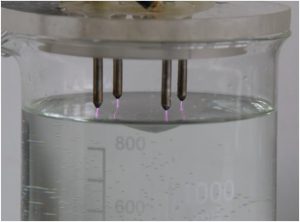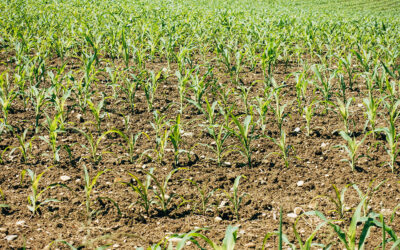The increase of resistance among microorganisms against a plethora of antibiotics has led to a demand for novel antimicrobial procedures.
As an example, biological transplant materials such as amniotic membranes or corneal transplants have to be prepared in a way that prevents any contamination from the donor. Whilst the general increase of microbial resistance necessitates the reduction in usage of antibiotics, processes involving alternative antimicrobial and antiviral compounds have disadvantages.
Thus, plasma‐treated solutions may be a possibility to overcome such problems in this special field of application, but also in other situations demanding safe and effective antimicrobial measures.
Direct application of cold atmospheric‐pressure plasma (CAP), but also indirect CAP application via plasma‐treated liquids, is a promising and partially common procedure for microbial decontamination of wounds or sensitive goods.
In several medical and environmental settings, proteins—and consequently, amino acids—are naturally present. Thus, the determination of the influence of proteins on the inactivation of microorganisms by plasma is important for almost any application of CAP in medical as well as hygienic settings.

Plasma generated by an AC‐driven pin‐to‐liquid discharge
A team of Turkish and German researchers used an AC‐driven pin‐to‐liquid discharge to determine the influence of protein on the antimicrobial effects during indirect plasma treatment.
They examined the effect of bovine serum albumin (BSA) and two amino acids—L‐alanine and L‐cysteine—on the antimicrobial property of plasma‐treated solution. The effect on the decontaminating activity of plasma in the presence of proteinaceous material should be elucidated to estimate the impact on practical CAP applications in medicine and hygiene.
Different effects of proteins or amino acids, respectively, on the antimicrobial CAP efficacy are conceivable: i) no influence; ii) synergistic influence due to the possible formation of products with higher antimicrobial effectivity; and iii) protective influence of proteins or amino acids which may be caused by a competing reaction.
The research shows that proteins have an impact on the antimicrobial efficacy of plasma‐treated solutions and thus, a disinfecting or antiseptic effect of plasma‐treated saline solution may be limited in the presence of proteins.
But beyond this, the experimental data leads to the assumption that the antimicrobial effect of a direct plasma treatment such as wounds is not affected by the presence of proteins.

















